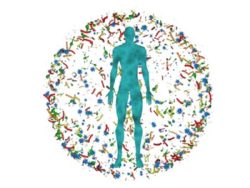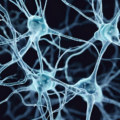Thiamine Dependency and Intermittent Ataxia
Readers of this blog will recognize that there are many posts concerned with thiamine deficiency and that is associated with a huge number of symptoms. I want to use this post to illustrate the difficulties experienced by a boy whose thiamine deficiency was proved. His case was written up in the medical literature because it was the first example of thiamine “dependency“. That meant that he was required to take massive doses of the vitamin in order to prevent intermittent recurrences of the brain disease known as cerebellar ataxia. Curiously, each episode was self-limiting, but as they recurred, each one left him with a little bit more brain effect. It was this case that forced me to devote myself to library study and change in medical practice throughout the remaining years before my retirement.
Although this boy’s problem was an example of a condition, thought to be extremely rare, it illustrated the kind of medical problems that occur as a result of dietary deficiency. In fact, I have come to the conclusion that prolonged dietary deficiency of this vitamin will make it difficult to restore health by its administration as a supplement. The enzymes in the body that require it seem to degenerate over time if the deficiency persists. Huge doses are required and it is not a simple vitamin replacement. We are using the vitamin as a drug in an attempt to coerce the enzymes back into a healthy state. We know from the history of beriberi, the traditional vitamin B1 deficiency disease, that large doses of the vitamin were required to restore health.
This case was reported in 1969 and the last time that I saw him was in the 70s. He had grown into a handsome boy with a marvelous personality. For example, he cut the grass for the neighbors without charging them and his customers were delighted with him on his paper route. This escape from a potentially lethal disease by the use of what might be called a megadose of vitamin B1 was incredibly impressive to me, making me wonder whether a healthy dose would benefit everyone. Is the modern diet so artificial that vitamin deficiency is common, in spite of their enrichment by the food industry?
I recorded the fact that the family had visited Florida. While they were in a store that was cooler than the outside temperature, it was without air conditioning and John became suddenly unconscious and was taken to an emergency room where his examination proved to be quite normal. On the following day, he went from a 95° temperature into a store with an estimated air-conditioned temperature of 60 to 65°. He immediately experienced difficulty in breathing and produced a kind of strident asthma that was self-limiting. He was again taken to the emergency room where his examination once again proved to be quite normal. The diagnosis given at the time was that it was due to “nerves”. A similar episode occurred on the way home when the air-conditioning was put on in the car. Note that an environmental temperature difference was enough for him to lose consciousness on one occasion and produce asthmatic breathing in another similar situation. He had never been known to experience asthmatic breathing previously. One can readily see that he would be a complete mystery to the doctors in the emergency rooms to which he was taken.
My interpretation would be as follows: as repeatedly pointed out in various posts on this website, his brain had an energy problem from the poor association of thiamine with its energy enabling enzymes and the stress of a sudden change in temperature, requiring an energy surge to adapt, could not be met. The energy deficiency affected the functions of the brain, causing syncope in one example and asthma in another. The diversity of this response illustrates the fact that different parts of the brain can be affected by the overall deficiency, perhaps even on a day to day basis. It is not surprising that such episodes are a diagnostic problem for ER physicians or any physician for that matter.
Syncope and Sudden Death
A very common incident occurring in dietary deficient people is a sudden fainting attack, known as a syncope. They invariably wind up in the ER where it is usually written off as being due to “nerves”. It is impossible to understand this without knowing the chemistry involved. It reminds me of two siblings, a boy and a girl, both of whom had been surviving on a junk-filled diet. The girl was a champion swimmer and was practicing one day by swimming laps. She swam the last lap, touched the pool wall and remained still. When she didn’t start to climb out of the pool, someone investigated and found that she had evidently died as she touched the pool wall. Her brother had been climbing ropes in a gymnasium. After he came down from a climb, he passed out and was taken to a hospital where he received intravenous fluids. It was recorded that he had 11 bloodstained bowel movements and expired. Although there was no proof that thiamine deficiency was the cause of death, I would be willing to bet that the fluid given intravenously to the boy was glucose saline and we know that an excess of sugar will seriously precipitate marginal thiamine to a deficiency state that would produce symptoms. It strongly suggests that the death was from thiamine deficiency.
Febrile Lymphadenopathy
In another post, I recorded the history of two boys with recurrent acute febrile lymphadenopathy (fever, swollen neck glands and high-temperature), both of whom responded completely to thiamine supplementation. The story bears repeating. This kind of illness is inevitably thought of as throat infection and treated with an antibiotic. Both boys had a marked increase of folate and vitamin B 12 in their blood that returned to normal levels after thiamine administration. I won’t go into the mechanism but it is interesting to speculate on how often children with a very common condition like this would have a similar underlying cause that would never, under any circumstances in the climate of modern medicine, be considered. The two cases were published in a medical journal but I have never seen a reference to it, probably because it is totally unbelievable.
I kept a diary at the time and want to make a few comments about one of these boys. When the supplemental thiamine was removed to see what would happen, he relapsed about three weeks later. The relapse began with recurrent abdominal pain, irritability, and a return of the fatigue, causing him to nap during the day as he did when he had his recurrent episodes. There were some abnormalities in his blood pressure, which are too technical to describe here. When I stroked the skin of his leg gently, it provoked a white streak that gradually faded, a phenomenon that is associated with abnormal activity of the autonomic nervous system, a system that is inevitably damaged with thiamine deficiency. He had large lymph nodes in his neck and there was an elevation of folate and vitamin B12 measured in his blood. All of this resolved when the thiamine was restored. It is interesting that he had a first cousin who suffered from Hodgkin’s disease, a malignant form of lymphadenopathy. I wondered whether this recurrent swelling of glands was potentially precancerous. From my reading of the vitamin B1 deficiency disease beriberi, I found that swelling of the glands in the neck could be seen in infants dying from the infantile form of the disease and fever was almost always present.
Mononucleosis: A Mistaken diagnosis?
On May 14, 1976, I made a note that we had a new patient admitted under the care of another physician. He had massively swollen lymph glands in his neck and the diagnosis was mononucleosis. The history recorded that his brother had also “died from mononucleosis” the previous April. A biopsy of one of his glands was reported that it was definitely not malignant. His case was discussed among my pediatric colleagues and I asked the responsible physician what he would do if the lymphocytes in the gland were reported as healthy and mature. The answer surprised me because it was obvious that the diagnosis of mononucleosis had been rejected. He stated that the boy would be treated for cancer “but we would soft-pedal it” I found his answer extremely confounding. We were confronted by a familial situation with an unknown diagnosis and yet he was to be treated as though it was known.
This reminded me of a situation that affected one of my granddaughters. She came home from school and went white water rafting with her friends. Evidently she fell in the water and when she got home she was so fatigued that she went to bed. Her mother, who was a university nurse took her to her workplace where a diagnosis of mononucleosis was made. I persuaded my son to bring her to my office where I gave her several infusions of intravenous vitamins. Her response was so good that she was able to return to school well. The obvious question that I asked myself was whether the diagnosis of mononucleosis was valid or whether it was an inappropriate mistake. The reader may or may not know that a diagnosis of mononucleosis, also known as “kissing disease” is associated with extreme fatigue and can prevent the unfortunate adolescent from returning to school sometimes for months. Once again I am confronted with the question, is our present medical model even close to being accurate?
I am reporting actual cases of thiamine deficiency that are a sampling of literally hundreds of similar cases that I encountered over the years. It should not surprise anybody when I question the current medical model for its accuracy and the use of potentially toxic compounds that often make things worse or do little or nothing toward relieving the disease. It is high time for sick people to seek the services provided by Alternative Medicine physicians whose medical societies are known as the American College for the Advancement of Medicine (ACAM) and the International College of Integrated Medicine (ICIM).
We Need Your Help
More people than ever are reading Hormones Matter, a testament to the need for independent voices in health and medicine. We are not funded and accept limited advertising. Unlike many health sites, we don’t force you to purchase a subscription. We believe health information should be open to all. If you read Hormones Matter, like it, please help support it. Contribute now.
Yes, I would like to support Hormones Matter.
Image by Christian Peters from Pixabay.
This article was published originally on September 17, 2020.












